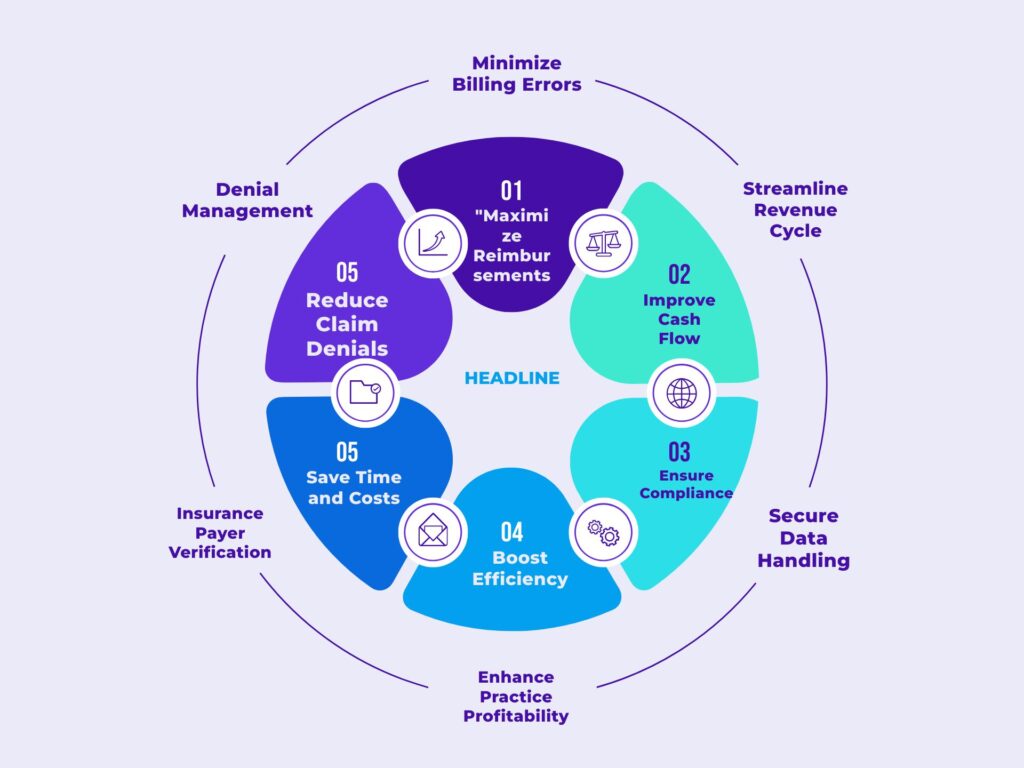Radiology Revenue Cycle Management (RCM) is a critical process in managing the financial health of radiology practices and imaging centers. It involves a series of steps to ensure accurate billing, proper reimbursement, and financial compliance. This article explores the essentials of Radiology , its components, benefits, and best practices to streamline operations effectively.
What is Radiology RCM?
Radiology RCM refers to the administrative and financial process that governs the management of revenue from radiology services. It includes patient registration, insurance verification, coding, billing, payment posting, and denial management. Optimized Radiology RCM ensures that imaging centers and radiology departments operate efficiently while maintaining compliance with industry regulations.
Key Components of Radiology RCM
1. Patient Registration and Scheduling
Efficient Radiology begins with accurate patient registration and scheduling. Collecting demographic details, insurance information, and medical history ensures a smooth start to the revenue cycle. Automated scheduling tools can reduce administrative errors and enhance patient satisfaction.
2. Insurance Verification
Insurance verification ensures that radiology services are covered under the patient’s insurance plan. Verifying coverage before providing services avoids claim denials and enhances revenue flow.
3. Medical Coding and Documentation
Accurate medical coding is essential for ensuring proper reimbursement. Radiology relies heavily on compliance with coding standards like ICD-10, CPT, and HCPCS codes. Comprehensive documentation supports accurate coding and reduces the risk of audits.
Streamlining Radiology Billing for Maximum Revenue
4. Claim Submission
Submitting clean claims is vital to the Radiology process. Claims must be error-free and comply with payer guidelines to avoid rejections and delays.
5. Payment Posting
Payment posting involves recording payments received from insurance companies and patients. This step provides transparency and helps identify any discrepancies in payments.
6. Denial Management
Denial management is an integral part of Radiology. Identifying the reasons for denials, rectifying errors, and resubmitting claims ensures optimized revenue recovery.
Benefits
1. Improved Financial Performance
Effective Radiology enhances cash flow and reduces revenue leakage. By minimizing claim denials and ensuring timely reimbursements, imaging centers can maintain financial stability.
2. Enhanced Operational Efficiency
Streamlined processes and automation tools reduce administrative burden, allowing staff to focus on core clinical activities.
3. Compliance with Regulations
Radiology ensures adherence to healthcare regulations, minimizing the risk of audits and penalties.

4. Better Patient Experience
Efficient billing processes and transparent communication improve patient satisfaction, fostering trust and loyalty.
5. Accurate Financial Insights
Advanced analytics in Radiology offer actionable insights into revenue patterns and operational inefficiencies, empowering data-driven decisions.
Challenges
1. Complex Billing Structures
Radiology involves diverse services, from X-rays to MRIs, each requiring specific coding and billing procedures. Managing this complexity is a significant challenge.
2. Frequent Policy Changes
Healthcare policies and payer guidelines often change, necessitating regular updates to RCM practices.
3. High Claim Denial Rates
Errors in coding, incomplete documentation, or lack of pre-authorization can lead to high claim denial rates, impacting revenue.
4. Technological Integration
Integrating RCM software with existing systems requires investment and expertise, which can be challenging for smaller practices.
Streamlining Radiology Billing for Maximum Revenue
5. Staff Training
Keeping staff updated on the latest coding standards and regulatory changes is essential but resource-intensive.
Best Practices
1. Invest in Automation Tools
Automated RCM solutions can streamline processes such as scheduling, insurance verification, and claim submission. This reduces human errors and enhances efficiency.
2. Conduct Regular Training
Training staff on the latest industry standards and payer guidelines ensures compliance and reduces errors.
3. Perform Regular Audits
Regular audits of financial processes and coding practices help identify inefficiencies and maintain compliance.
4. Partner with Experts
Outsourcing Radiology to experienced providers can enhance efficiency and allow radiology departments to focus on patient care.
5. Monitor Key Performance Indicators (KPIs)
Tracking KPIs such as claim denial rates, days in accounts receivable, and collection rates helps measure the effectiveness of RCM practices.

Emerging Trends in Radiology RCM
1. Artificial Intelligence (AI) Integration
AI-powered tools are transforming Radiology RCM by automating repetitive tasks, predicting denials, and improving coding accuracy.
2. Patient-Centric Billing
Transparent and simplified billing processes are becoming a priority to enhance the patient experience.
3. Value-Based Care
As the healthcare industry shifts towards value-based care, Radiology RCM is adapting to prioritize quality outcomes over service volumes.
4. Cloud-Based Solutions
Cloud-based RCM systems offer scalability, real-time updates, and enhanced data security, making them a preferred choice for many practices.
Table: Common Radiology RCM Challenges and Solutions
| Challenge | Solution |
|---|---|
| Complex billing structures | Invest in specialized RCM software |
| Frequent policy changes | Regular staff training |
| High claim denial rates | Implement denial management systems |
| Technological integration | Choose user-friendly platforms |
| Staff turnover | Conduct ongoing training sessions |
| Data security concerns | Use secure cloud-based solutions |
Conclusion
Radiology RCM is the backbone of financial operations in imaging centers and radiology departments. By focusing on efficient processes, leveraging automation, and staying compliant with industry standards, practices can maximize their revenue while providing high-quality patient care. Staying ahead of emerging trends and continuously improving RCM practices ensures long-term success in the competitive healthcare landscape.
FAQs
What is the role of medical coding in Radiology RCM?
Medical coding translates radiology services into standardized codes (e.g., ICD-10, CPT). Accurate coding is essential for ensuring correct billing, minimizing claim rejections, and maintaining compliance.
How does Radiology impact patient experience?
Efficient Radiology improves patient experience by providing transparent billing, reducing delays in claims processing, and ensuring seamless communication regarding financial matters.
Are there tools available to simplify Radiology?
Yes, numerous RCM software and cloud-based platforms help automate tasks, manage workflows, and provide real-time insights into the revenue cycle for radiology services.

